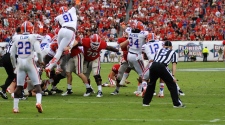There is no doubt that the phenomenon of brands that want to have to be “honest” through structural and graphic design is influencing the world of packaging and is creating a new standard in communication. But this was already known before.
In the 2000s, trend forecasters predicted that there would be a “renewed emphasis on honesty” in the communications of visual and verbal brand (** Allen and Simmons, 2003: 125). Companies and institutions are using honest to try to regain the trust and faith of an apparently suspicious public branding.
In recent years, many leaders of the food industry have become synonymous with unethical resources, anti-environmental practices, deceptive marketing and production of artificial means. So your task is to reverse that negative image.
“The British brand of Dorset Cereals has had a huge commercial success without advertising, only through its innovative packaging design. Typography typewriter awakens pre-digital nostalgic while designing related to the mark with nature through a representation that refers to the modern minimalist art. “
This scenario leaves a gap in the market for food manufacturers and “honest” drinks offering a fair profit, environmental sustainability, transparent communication and production methods aligned “how nature intended them.” Essentially these brands serve as an antithesis to large corporations food and beverage industry.
In packaging design they make your food look “honest” (without artificial features or unethical practices), and are also “honest” in its communications (not withhold information or mislead their audiences). But how these brands communicate their credentials honest in stores?
Honesty is a human trait so how can this be visually applied to a food or drink ?. Display honesty is a difficult challenge, honesty can not be seen because it is intangible. Conversely, integrity can only be known or experienced.
“In 2008, Plum, a small company in California, came packaged organic baby food in pouch revolutionizing the market. By an “honest” product and a functional container unseated Gerber, who was undisputed category leader since 1960. “
The new design trends that can be displayed in the newest releases of packaging around the world seem to use the same; back to basics. Is a common feature anti-use digital resources to create an identity of “honest” and away from the industrial world, or large corporate brand which supposedly interested only thing is profit and sell them.
Andrew Gibbs, founder of www.thedieline.com, blog packaging design the world’s most visited states: “Z (youth under 20) Generation require real trust and human connection to the products and brands they consume. This connection can be expressed in different ways, from a connection with nature, the handwritten word, the past, or simply to others. This style is a rejection of technology; a style of pre-computer era, if you will. “
“The first batch of beer BrewDog was conceived in the garage of one of the two founders, in 2007. Since then started the craft beer revolution in the UK. He created a proliferation of new brands and continues to challenge perceptions of brewing in the world. “
As contradictory as it may sound, the digital natives born surrounded by computers and cell phones had almost no buttons, they are attracted by brands structural packaging designs and graphics which refer to times before all the technology of today.
But this change is not something new or small brands, including big brands are revising their designs to make their unrealistic fantasies of Photoshop and perfect to start using pencils, brushes and rubber seals products. As well as the use of recycled, recyclable or reusable.
The biggest challenge is to create that are not only appropriate to the style of fashion brands, but they used to have something unique to your personality. A brand has to tell his own story. That story (along with the product, if necessary) will have to evolve to achieve establish connections that consumers are looking for.
















